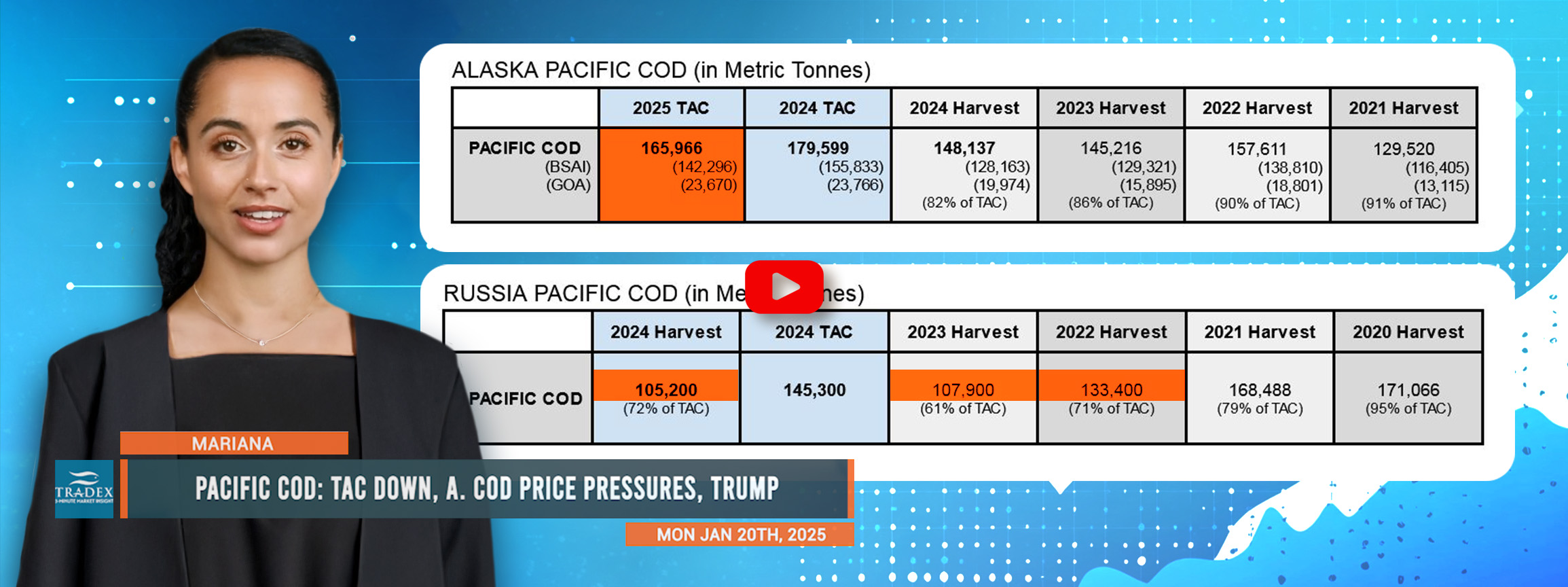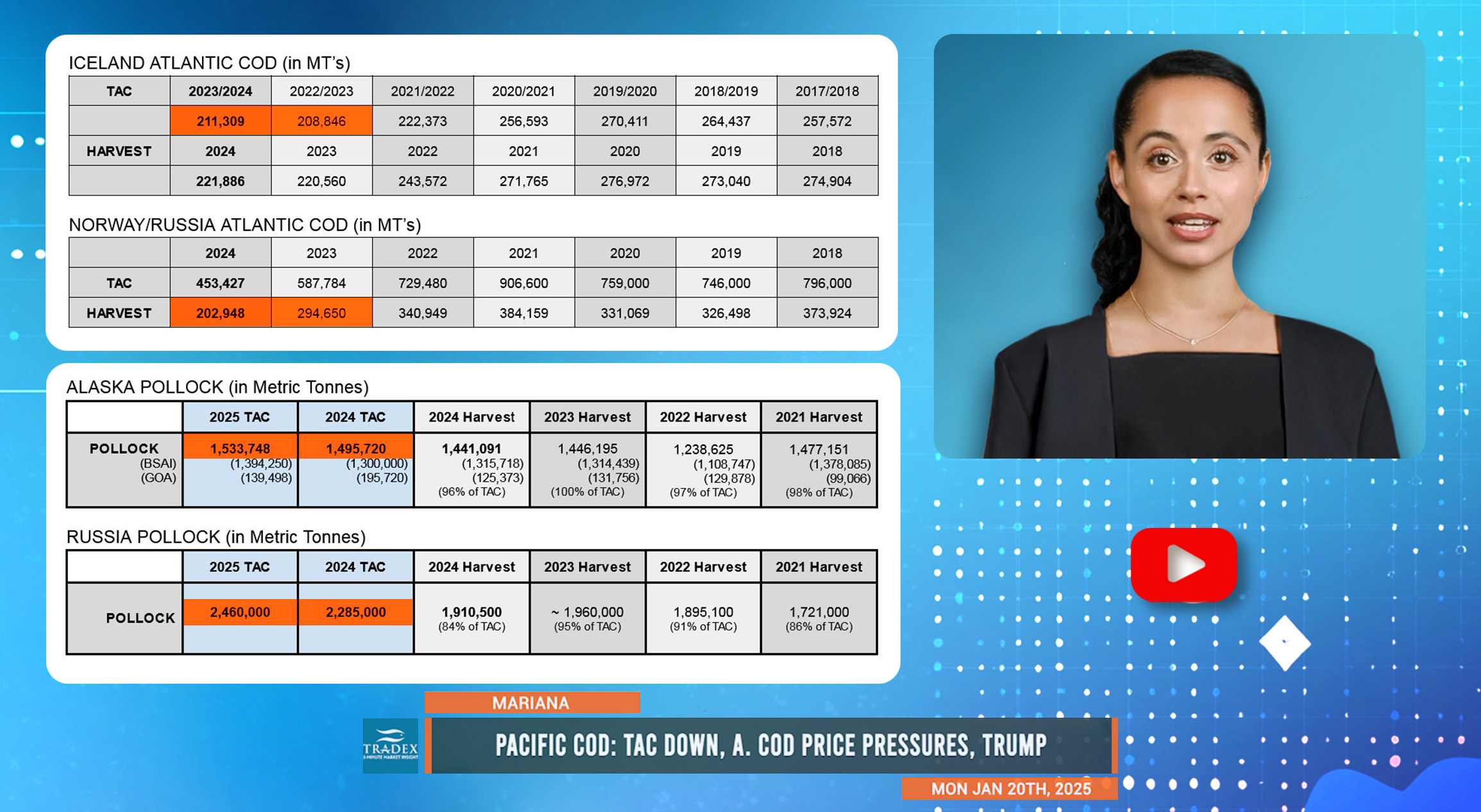
Loading
EP 724 | AIRED 01/20/2025
Pacific Cod: Lower Alaska TAC, Lower Atlantic Cod Supply Price Pressures, Trump
January 20th, 2024 - Alaska’s 2025 Pacific Cod “A” season has commenced - however with an overall Total Allowable Catch set lower than last year’s.
This year’s Total Allowable Catch for the Bering Sea and Aleutian Islands is approximately 142,000 metric tons, while the Gulf of Alaska TAC is just over 23,000 metric tons, bringing the combined total to just under 166,000 metric tons - representing a decrease of nearly 14,000 metric tons (or 31 million pounds) compared to last year.
Based on historical trends, we estimate a total Alaskan harvest of Pacific Cod to range between 133,000 and 150,000 metric tons. At the lower end, this would represent a 10% decrease compared to last year's harvest, while the higher end would align closely with last year's totals.
For comparison, Russian Pacific Cod harvested amounted to about 105,000 metric tons for 2024, aligning with the 2023 harvest, but down about 21% from the harvest of 2022.

For 2025, Alaskan Cod may be in for some further price pressure as global Atlantic Cod supply is forecasted to decline. In fact, The Groundfish Forum is forecasting for about 160,000 less Atlantic Cod for 2025 than 2024. Looking at the 2024 harvest levels, while Atlantic Cod harvest in Iceland held steady at about 221,000 metric tons harvested last year, the joint Norway Russia fishery harvest for 2024 dropped by almost 100,000 metric tons compared to 2023.
Just to touch very briefly on Pollock, Alaska’s Pollock TAC for 2025 increased about 2.5% or about 40,000 metric tons while Russia’s Pollock TAC may be in for an increase of about 5% or over 100,000 metric tons compared to last year. Continue to follow our updates for an upcoming Pollock episode.

Advertise Here: advertising@tradexfoods.com
Our recommendation is to secure or make your Pacific Cod commitments now. Pricing is expected to remain strong at a minimum, but it also meets the criteria for upward pressure - although a price ceiling is likely, and will be determined by market tolerance. Additionally, with Donald Trump taking back the presidential office, geopolitical dynamics, such as trade policies and international relations, may influence prices, and the flow of supply.

--- If you’re not already, be sure to subscribe to our 3-Minute Market Insight for seafood updates and insights delivered right to your inbox.


